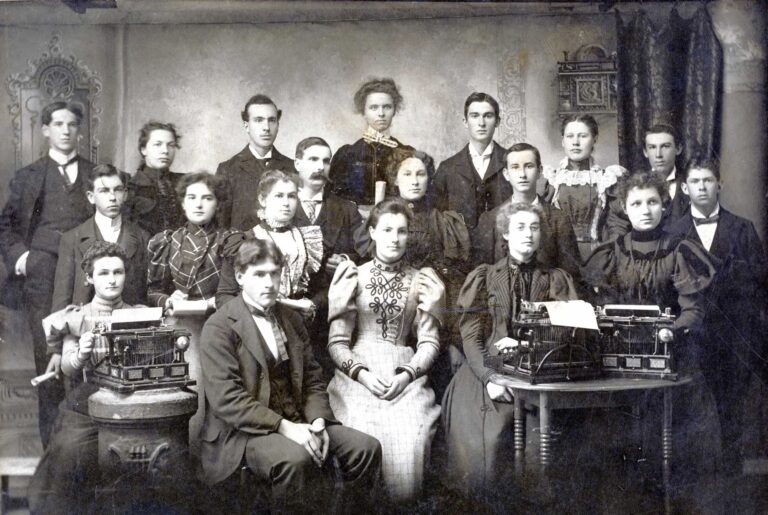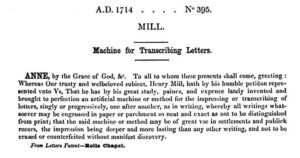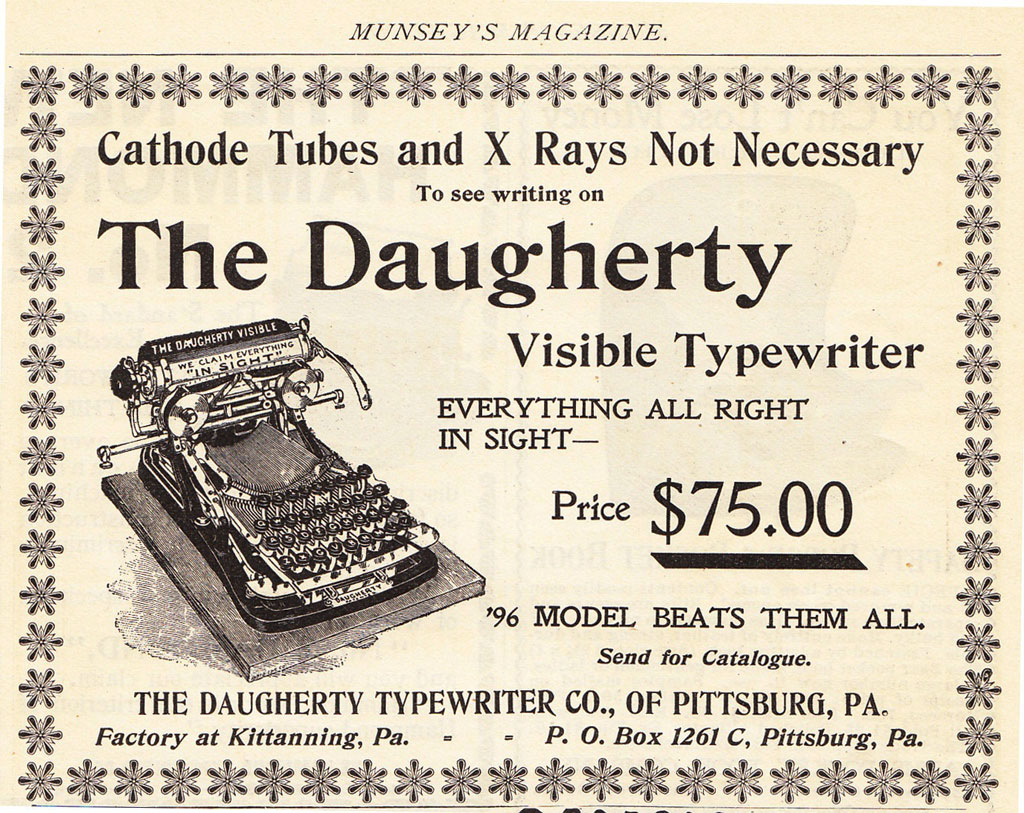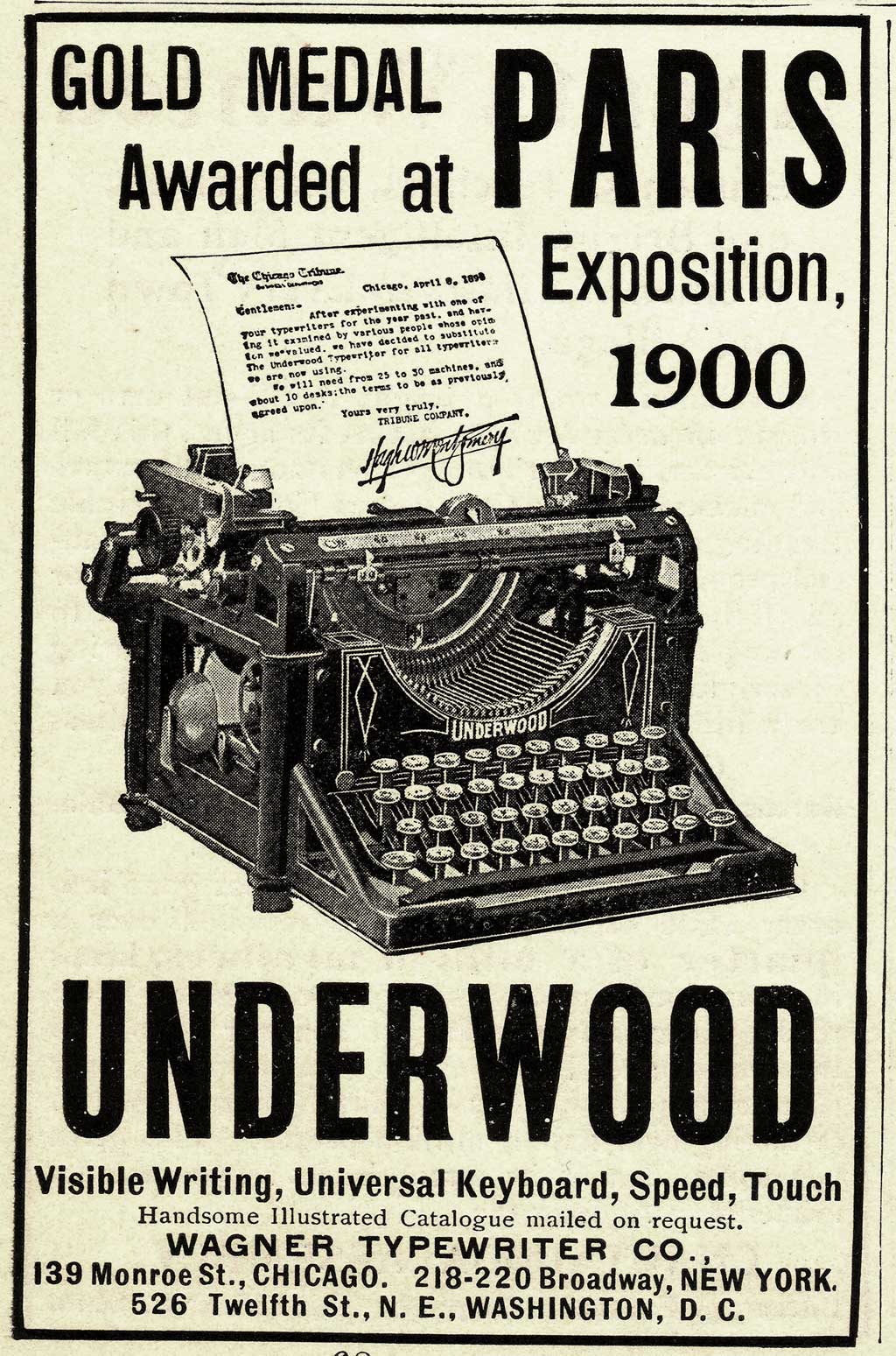history
First Typewriters
In 1714, British engineer Henry Mills obtained the first patent (No. 376) for a ‘Machine for Transcribing Letters’ on paper that would be equal to the quality of printing. His words clearly convey what a typewriter would be and they are regarded as the first description of a typewriter.
‘An artificial machine or method for the impressing one after another, as in writing, whereby all writings whatsoever may be engrossed in paper or parchment so neat and exact as not to be distinguished from print.’
His machine was apparently never made.
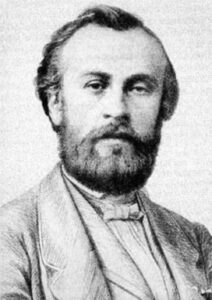
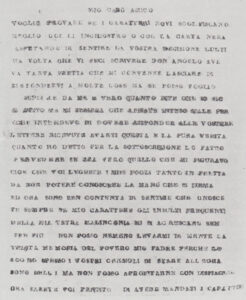
An Italian, Pellegrino Turri, made the first documented typewriter around 1808. He supplied his typewriter to his blind friend, Countess Carolina Da Fivizzano, so she could communicate with him when she moved to another city. Some of the letters have survived and are the earliest known typed letters.
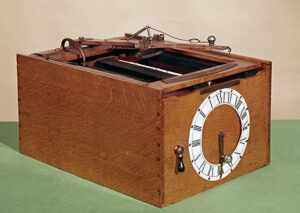
The first American patent belongs to John Burt of Michigan who made a typing machine he called the ‘Typographer’ in 1829. It did not use a keyboard but used a lever to select the characters. It is made predominantly of wood and is the shape and size of a bread box. It was not commercially made but he did receive some positive press in the New York Commercial Advertiser – “a simple, cheap, and pretty machine for printing letters, should it be found to fully answer the description given of it.
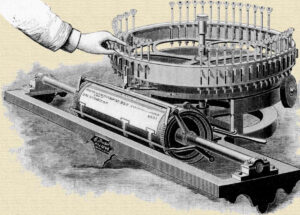
Charles Thurber of Massachusetts took out a patent in 1843 for a machine called the ‘Patent Printer’. It used a large rotating horizontal wheel with a plunger for each character positioned around its perimeter. Underneath this wheel was the first cylindrical platen or roller to appear on a typing machine. It moved laterally and would become the standard design for paper handling on all typewriters.
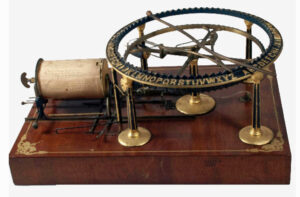
John Jones of New York called his 1853 machine the ‘Mechanical Typographer’. The illustrated ad for the Typographer proudly states “For Printing Letters, Poetry, Cards, Contracts, Lessons, Compositions, Notes etc. as fast as the majority of people can write with a Pen.”
This typewriter went into production, with 130 being made before the entire factory was destroyed by fire. There are just two known to have survived, including Jones’s own prototype machine which is in the Dietz Collection at the Milwaukee Public Museum and one other which is in a private collection.
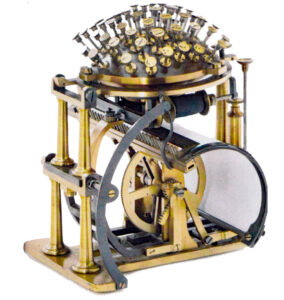
In 1870, Danish clergyman Malling Hansen invented a machine he called the ‘Typing Ball’. It looked like something out of mad scientist’s lab with a dome covered in type plungers. It was made for blind typists to type for sighted people to read. Various versions were manufactured, with around 500 being produced. This was, despite its marginal success, not the machine that would establish the typewriter as one of the most important inventions of the century. The future success of the typewriter would have to wait until the appearance of the Sholes and Glidden in 1874 and, even then, it was not until the mid 1890s that things really took off.
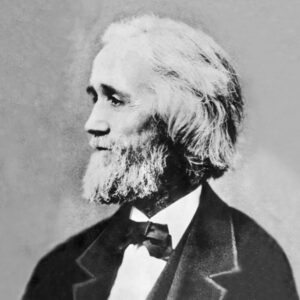
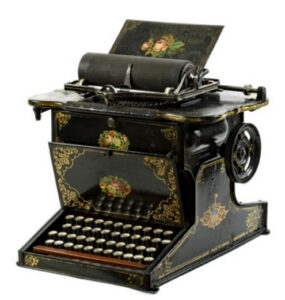
The standard big black typewriters that we know today were the result of many years of mechanical evolution throughout the 19th century. In the early years between 1800 and 1870, there were approximately forty typewriter inventors but none of their machines were made in any quantity and they did not awaken the world to this revolutionary invention.
In Milwaukee in 1866, in the active and busy Kleinstuber’s Machine Shop, Chistopher Latham Sholes had begun work on his typewriter along with his small team of machinists and backers. Over the next six years, they created fifty prototypes and what emerged was a workable typewriter of largely wooden construction. This typewriter was a delicate instrument, frequently needing adjustments in order to type well and they worked hard to sell one hundred machines locally. During this time a dozen companies declined to manufacture the machine, so there was a deepening feeling, especially felt by Sholes, that their typing machine would never be manufactured on a large scale. Their fortunes would change when Densmore (a financial backer) and Yost (a salesman) presented Sholes’s newly named ‘Type Writer’ to manufacturer Remington & Sons of Ilion New York in 1873. The fit was perfect because Remington & Sons were not only able to produce machines to fine tolerances and in quantity but with the Civil War over and the decreased demand for guns, they were interested in new ventures.
After the meeting, Philo Remington asked Mr. Benedict, a Remington executive, “What do you think of it?” as they left the room. He replied, “That machine is very crude, but there is an idea there that will revolutionize business.” Remington asked, “Do you think we ought to take it up?” Benedict said, “We must on no account let it get away. It isn’t necessary to tell these people that we are crazy over the invention, but I’m afraid I am pretty nearly so.” A tentative agreement was reached that day.
Remington assigned two of their best machinists to turn the wooden prototype into a beautiful metal machine, adorned with hand painted floral decorations and pastoral scenes. By 1874, the first of 4,000 Sholes & Glidden Type Writers came out of the factory.
Sholes and Glidden typewriter
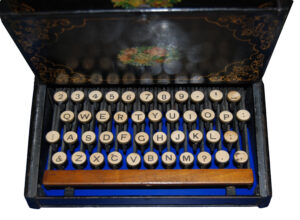
The Sholes and Glidden typewriter of 1874 was the first typewriter to introduce the QWERTY keyboard. The purpose of this layout was to help prevent the type bars from clashing with each other by separating the type bars for letters that are frequently typed in sequence, such as ‘t’ and ‘h’.
Attempts were made to introduce more efficient keyboard layouts once typewriter designs had evolved and the jamming of the type bars was no longer such a problem, but it was too late, people had already learned one arrangement of keys and understandably did not want to learn another.
It is interesting to note that the word ‘typewriter’ can be typed using only the top row of the QWERTY keyboard. It is rumoured that this was done to allow the typewriter salesmen to quickly type the word ‘typewriter’ to impress the curious eyes watching. It is almost certainly the case, as the odds of having these letters randomly appear in the same row is very low.
The Sholes and Glidden keyboard only has uppercase characters. The successor to the Sholes and Glidden, the Remington 2 typewriter from 1878, has a shifting carriage giving both upper and lower case characters.
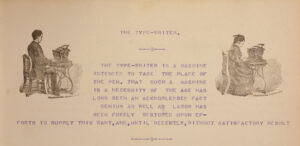
The social custom for hand written correspondence was firmly rooted in the Victorian age. The reaction to early typed correspondence and the break with this etiquette was generally not well received.
J.P. Johns, a Texas insurance man and banker who bought a Remington in the late 1870s, received this tepid response from one of his insurance agents:
“I received your communication and will act accordingly. There is a matter I would like to speak to you about. I realize, Mr. Johns, that I do not have the education which you have. However, until your last letter I have always been able to read the writing. I do not think it was necessary then, nor will it be in the future, to have your letters to me taken up to the printers and set up like a hand bill. I will be able to read your writing and am deeply chagrined to think you thought such a course necessary.”
As the years went by and the rapid business growth strained the capacities of existing office organizations, managers grew more willing to gamble on laborsaving practices and to let old etiquette slip away. The typewriter’s extraordinary offering of speed, legibility and the means to make more than one copy at once could not be ignored.
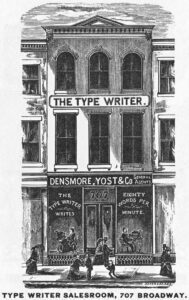
Being first is not always easy. The Sholes & Glidden typewriter was not a quick hit and sold very slowly for the first two years, then with only moderate success. New technology needs time to be seen and understood in any age and, as is often the case, not even the inventors fully understand the merits of their own inventions.
Here are the main reasons for the very slow early sales of the typewriter.
- The Sholes & Glidden sold for $125, a huge amount at the time. A horse drawn carriage cost between $30 and $75 and an upright piano could be had for $100.
- Surprisingly, typewriters were not initially marketed for the general business office but were seen as labor saving devices for ‘Ministers, lawyers, authors, stenographers and all who desire to escape the drudgery of the pen.”
- Hand written correspondence was the social convention in the Victorian age. The reaction to early typed correspondence and the break with this etiquette was generally not favourable.
- There were very few professional typists to utilize the speed of the typewriter.
A Menagerie of typewriters
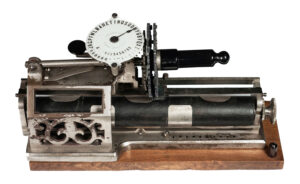
The ‘index’ class of typewriter is defined by the absence of a keyboard. Instead, a dial, knob, or lever is used to select the characters to be printed.
It might seem strange that index typewriters were made at a time when keyboard typewriters were available, as typing was certainly slower on an index typewriter, but the cost to buy them was much less than a keyboard machine. Index typewriters ranged in price from $5 to $40, while keyboard typewriters ranged from $60 to $100. During the 1880s and 1890s, this was a lot of money as compared to a clerk’s wage of $5 a week, the cost of a horse drawn carriage at between $40 and $70 or a piano at $65.
In addition, if one had poor handwriting, speed was not the only benefit as anyone could now produce legible written work. The index typewriter was popular for small businesses and home use during the 1880s and 1890s, with many remarkable designs being produced. However, with the increasing availability of secondhand keyboard typewriters and the major advantage of touch-typing becoming evident during the 1890s, the market for the index typewriter quickly disappeared by the turn-of-the-century.
Many examples of these ingenious index typewriters can be seen in this collection.
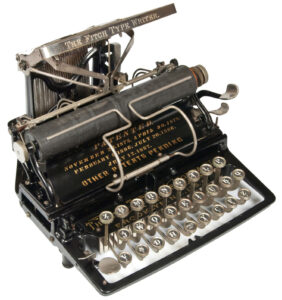
novelty to necessity
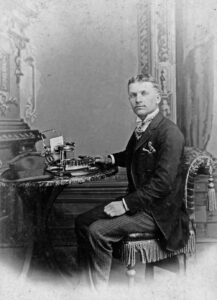
The Sholes and Glidden typewriter (1874) was seen as a tool for those with specific typing needs such as lawyers, judges, stenographers, ministers, and editors. The first Sholes and Glidden typewriter advertisement only mentions at the end that “All men of business can perform the labor of letter writing with much saving of valuable time.”
However, as the typewriter became indispensable as an office machine, all manner of organizations that depended on written records desired these new machines for speed, legibility, and manifolding (making multiple copies at once). The bureaucracy of the standard practice had been overcome and typewriters were, by the mid 1880s, used in great numbers of offices, military services, medical institutions, churches, publishers, schools, and courts. Writers and journalists also discovered the advantages in making the switch from pen and ink.
Government agencies were seen as a fertile market but with all the set protocols for written communications, the American government was not quick to hop on the bandwagon and was one of the last organizations to adopt the typewriter. ‘The Typewriter World’ magazine in 1897 complained “The records of State legislators and of Congress are scrawled on paper with a pen, just as they have been since 1777, when the first Congress assembled at Baltimore.”
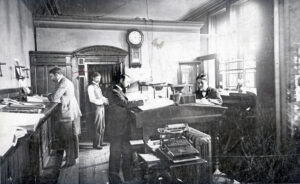
As the years went by and the rapid business growth strained the capacities of existing office organizations, managers grew more willing to gamble on laborsaving practices and to let old etiquette slip away. The typewriter’s extraordinary offering of speed, legibility and the means to make more than one copy at once could not be ignored.
One drawback, at the time of the introduction of the Sholes & Glidden typewriter, was that there were very few professional typists. This situation would improve with the advent of the first typing school at the YWCA in New York City in 1881, with many more schools opening nationally in quick order. By 1886, just five years after the upturn in demand, almost every sizable office employed at least one typist. The typewriter was no longer a novelty but a necessity.
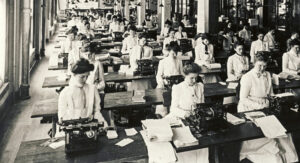
Great Innovations

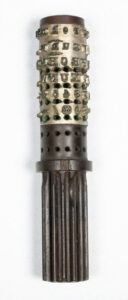 A ‘single type element’ is a typewriter component that has all of the characters of the keyboard embossed on its surface. They came in various shapes including cylinders and spheres. The IBM Selectric typewriter of 1961 uses a spherical type element affectionately called the ‘golf ball’.
A ‘single type element’ is a typewriter component that has all of the characters of the keyboard embossed on its surface. They came in various shapes including cylinders and spheres. The IBM Selectric typewriter of 1961 uses a spherical type element affectionately called the ‘golf ball’.
A typewriter using a single type element does not have individual type bars for each of the characters. This provides some advantages including a consistent alignment of the characters on the paper and, importantly, the means to change the font style by switching one type element for another.
The single type element had its origins in the 19th century, with some of the great 19th century typewriters, including the Hammond, Blickensderfer and Munson utilizing this innovative design. The very first manufactured typewriter to use a single type element was the Crandall 1 in 1883 (seen to the left). The shape of the Crandall type element is a cylinder about the size of one’s finger. Like the IBM golf ball, this cylinder rotates and rises to the correct position to type the characters.
The single type element disappeared soon after the Underwood came on the market in 1896 but, as mentioned, it made a strong comeback on the IBM Selectric of 1961. The (electric) Selectric typewriter defined the standard office typewriter for the next twenty years and became legendary in its own right.
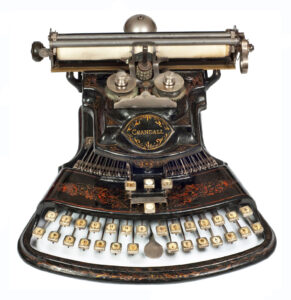
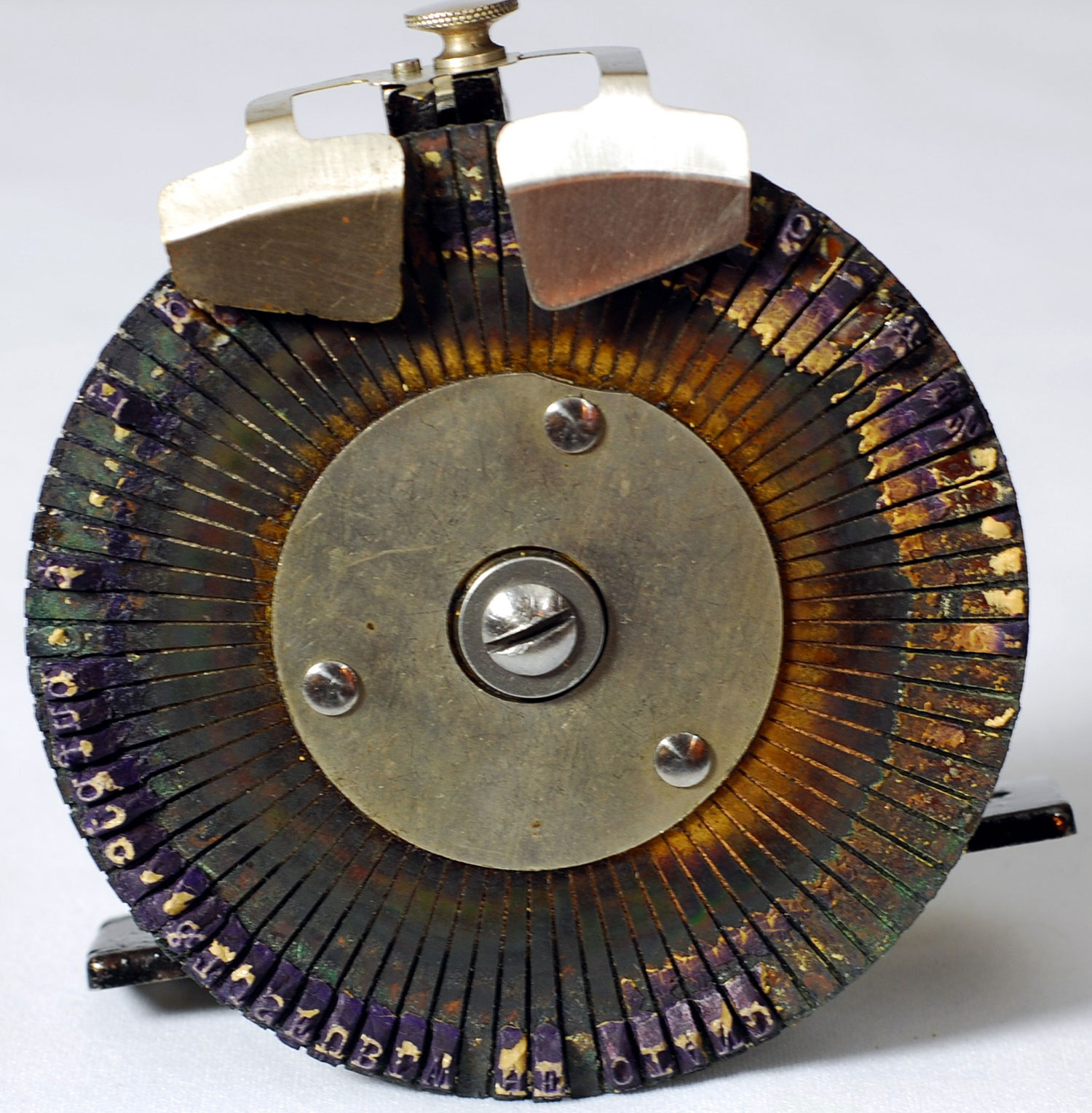
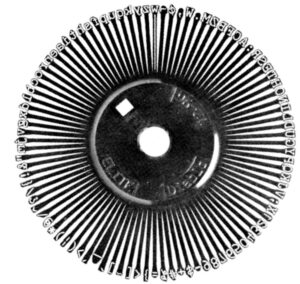
A daisy wheel from a 1970s typewriter or computer printer.
The first daisy wheel from 1889.
A ‘type element’ is a typewriter component that has all of the characters of the keyboard embossed on its surface. A ‘daisy wheel’ is a type element that looks like a small bicycle wheel with a spoke for each character on the keyboard. On the end of the spokes are the molded characters, which imprint onto the paper.
Many electric typewriters and some of the first computer printers used a daisy wheel in the 1970s and 80s but the first daisy wheel actually appeared on the Victor typewriter in 1889. The Victor’s daisy wheel has brass fingers radiating from the central hub (again, just like spokes on a bicycle wheel) with hardened rubber characters on their ends. The daisy wheel rotates into position when a character is selected with the swinging lever. A key is then depressed causing a small rod to push against the end of the brass spoke making the hardened rubber character press against the paper to print.
The daisy wheel was only used on a very few 19th century typewriters, including the Edland, which can be seen in this collection. This innovative means to print would have to wait close to a 100 years before it would find real success in the 1970s and 80s.
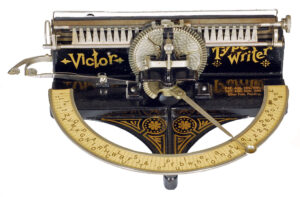
The Beginning of standardization
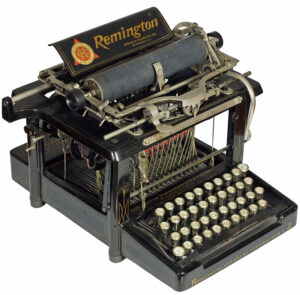
The Sholes & Glidden typewriter (Remington 1) saw an increase in sales from its very slow start in 1874 but there were limits to its success as it typed only in uppercase and often needed adjusting to keep the typing aligned. In 1878, the Remington 2 was introduced sporting upper and lowercase characters. It was much more reliable as well. By this time, typewriters had begun to enter business offices in ever increasing numbers, as the times continued to catch up with this revolutionary machine.
The Remington 2 is of the design called a blind-writer where the type bars swing up to the underside of the platen (roller) so, in order to see what you had typed, you would have to stop typing and lift up the carriage to look underneath. Still, the saying on the logo ironically states that “To Save Time is to Lengthen Life”. Despite this limiting design, the model 2 sold in vast numbers and would became the ‘Model T’ of typewriters’ right up to the beginning of the new century.
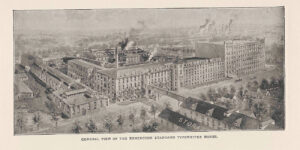
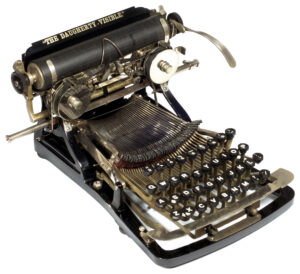
The Daugherty typewriter of 1893 presented for the first time, in a manufactured typewriter, the three essential design features that would define 20th century typewriters. These features are, four rows of straight keys, a single shift key and type bars that strike the front of the platen giving visible typing.
Even with this winning design, the Daugherty was not a typewriter on which one could type fast as the key levers were very long and wobbly. Still, the configuration of having the type bars laid out in a semi-circle behind the keyboard and in front of the carriage was a revelation that eluded so many clever typewriter pioneers. It is quite remarkable that this layout was not implemented by others, especially when other typewriters such as the Franklin (amongst many), while using the semi-circle arrangement of type bars still failed to place them in this opportune position.
The Daugherty, despite modest success, had solved the important question of where to place the typebars. It just a few years, in 1896, Franz Wagner would create the milestone Underwood with the same design features pioneered on the Daugherty. The Underwood though was fast and responsive and became the standard.
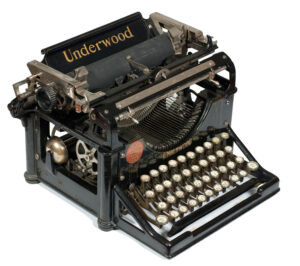
The Underwood typewriter was invented by Franz Wagner, a brilliant engineer who had already designed the Caligraph (1880). The Underwood appeared in 1896 and quickly set the standard for the next century. It was a typewriter with the correct design features, four rows of straight keys, a single shift key and type bars that strike the front of the platen giving visible typing. It also had a remarkably light and fast touch. It was simply superb to type on.
Within a few short years, the Underwood would usher in the new century and put an end to the period of rich diversity in typewriter design.
